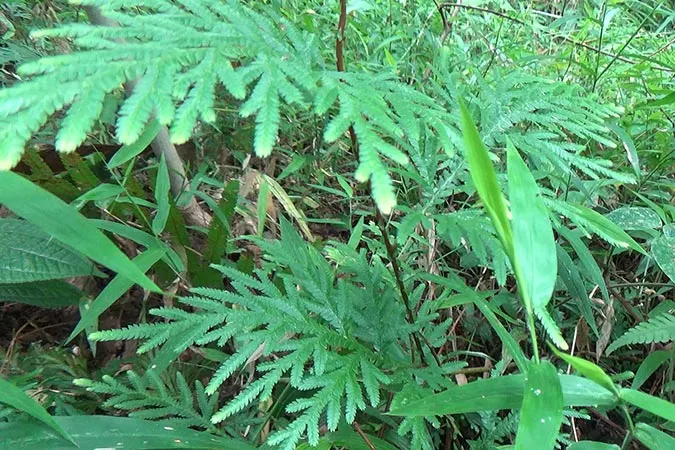Ranela or Asian spikemoss (Selaginella plana) is a species of plant in Selaginellaceae, fibrous roots, creeping in the forest, stems 0.5-1 cm in diameter, yellowish brown and slightly grooved, used by local residents as an antidote to demons and treat poisonous snake bites.
S. plana has green leaves with small and simple sizes that resemble flat scales, smooth surface, encircling the trunk and on the side branches arranged in four rows where the two side leaves consist of large leaves that fall off easily and two front rows of small, attached leaves.
Leaves are not stemmed, appear crossed, smooth surface. Ranela produces two types of spores that are not the same size. Sorus grows at the tip of the terminalia. Sporangia in fertile axillary leaves. The sporophyll is larger than the sporangia, collected into rectangular and sometimes slightly flattened terminal grains.
Shaded terrestrial at an altitude of more than 200 m in the tropics. Often used as an ornamental plant. In some areas it is used as a wound medicine, blood purifier, stomachache medicine and fever medicine by bathing using boiled water.
Kingdom: Plantae
Phylum: Tracheophyta
Class: Lycopodiopsida
Order: Selaginellales
Family: Selaginellaceae
Genus: Selaginella
Species: Selaginella plana
S. plana has green leaves with small and simple sizes that resemble flat scales, smooth surface, encircling the trunk and on the side branches arranged in four rows where the two side leaves consist of large leaves that fall off easily and two front rows of small, attached leaves.
Leaves are not stemmed, appear crossed, smooth surface. Ranela produces two types of spores that are not the same size. Sorus grows at the tip of the terminalia. Sporangia in fertile axillary leaves. The sporophyll is larger than the sporangia, collected into rectangular and sometimes slightly flattened terminal grains.
Shaded terrestrial at an altitude of more than 200 m in the tropics. Often used as an ornamental plant. In some areas it is used as a wound medicine, blood purifier, stomachache medicine and fever medicine by bathing using boiled water.
Kingdom: Plantae
Phylum: Tracheophyta
Class: Lycopodiopsida
Order: Selaginellales
Family: Selaginellaceae
Genus: Selaginella
Species: Selaginella plana
